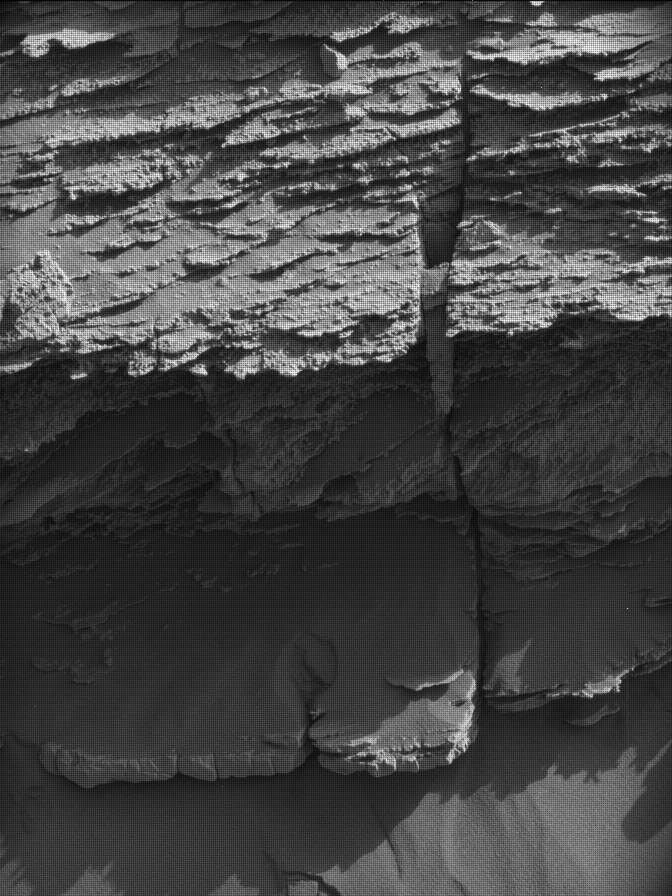After yesterday’s check-out, Curiosity is GO to attempt to make our 37th drill hole on Mars. The prior plan’s DRT cleaned up our target Amapari beautifully – it is in the middle of the clean area in the attached MAHLI image. Today is just a one-sol plan, but it is a full one!
Before drilling, we have a short amount of time for imaging. Drilling take a lot of time and power, so we had to limit what else we could fit in today. The rover will be examining a representative bedrock target named “Coimin” with Mastcam and ChemCam LIBS. Mastcam is also taking a large 16x9 stereo mosaic to the southeast of an area named “Amapa,” while ChemCam is taking a 12x1 long-distance RMI mosaic to the north to cover the inverted channel.
Since drilling requires a lot of energy, Curiosity will take a nap before proceeding. As one of the Rover Planners today, I helped to sequence the arm activities. Drill days are always challenging because when we redesigned drilling to keep the drill bit extended, we had to build in a lot of extra sequencing to make it work and do it safely. This means it takes our tools a long time to simulate it and can make the planning day a little longer. Today, we begin with locating and imaging a target we will need later when we clean the sample out of the drill. We select this target to be out of the main part of the workspace so we won’t dump drill tailings on top of anything interesting. We then place the drill on Amapari and start drilling. We are aiming for a depth of 35mm in order to get enough sample for all of the CheMin and SAM experiments we want to do here. This can take up to three hours, depending on how hard the rock is, and we can never really know until we try to drill. Other recent drill targets have been relatively soft, and hopefully Amapari will be in family. After we complete drilling, we will take Navcam and Mastcam stereo images of the (hopefully) new drill hole and then park the arm in a configuration that is safe for overnight.
Before falling asleep for the night, we will also take a DAN active observation.
Written by Ashley Stroupe, Mission Operations Engineer at NASA's Jet Propulsion Laboratory




































